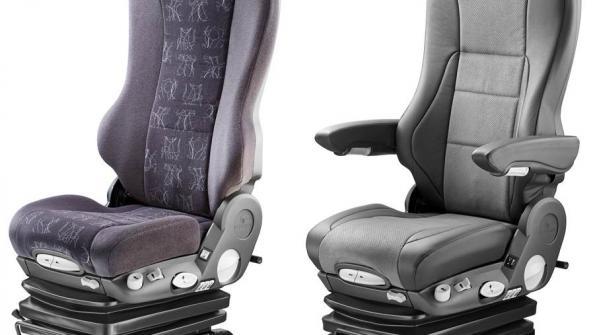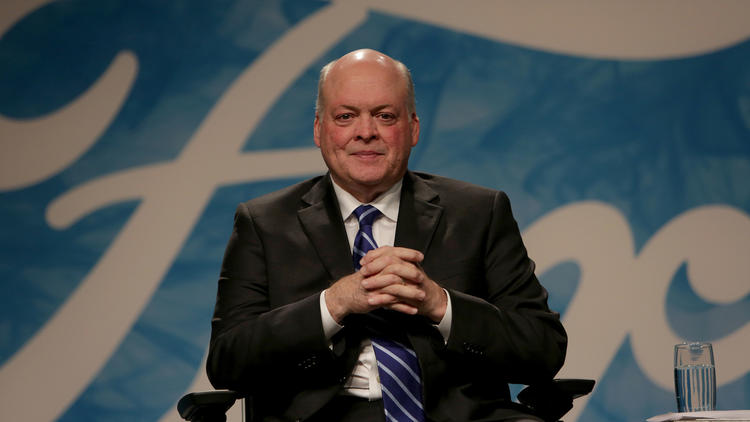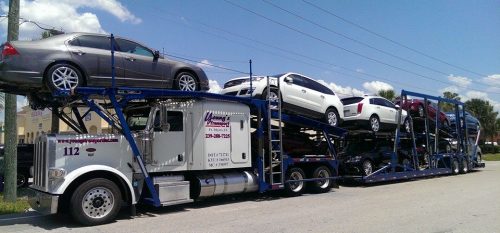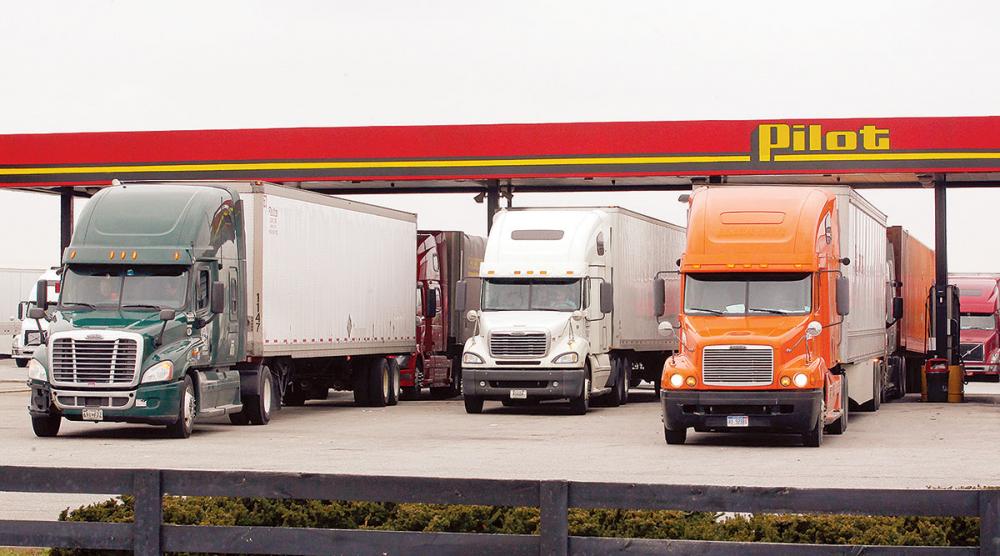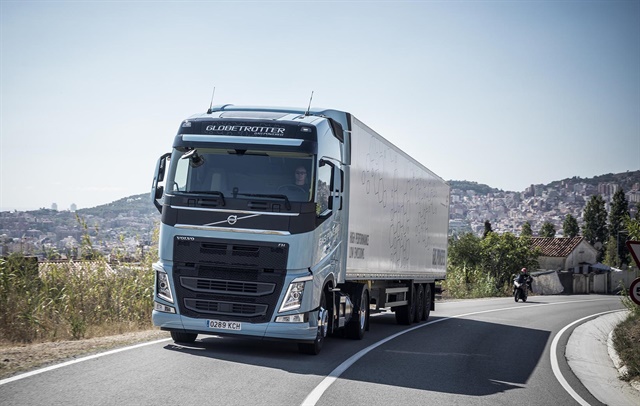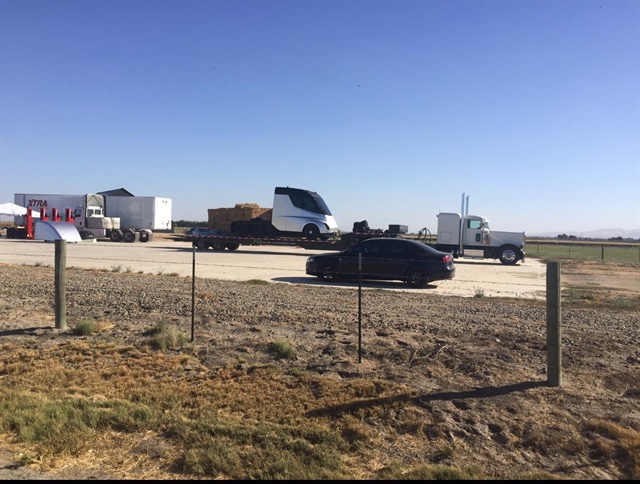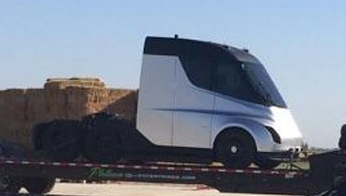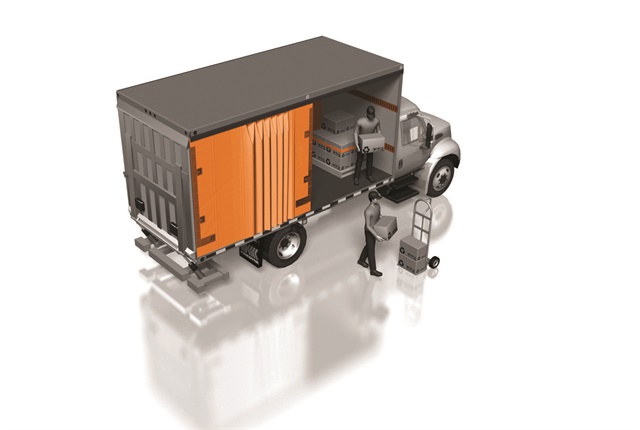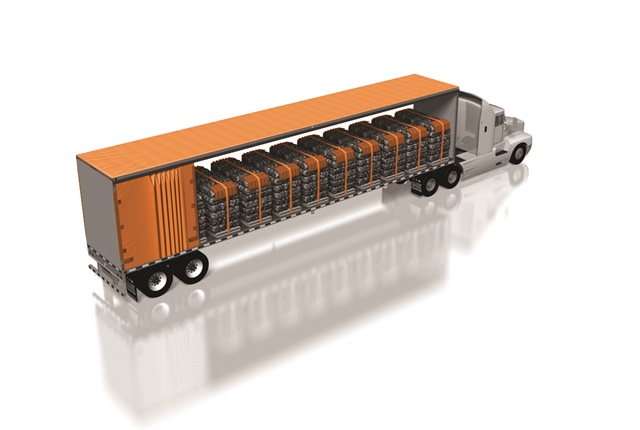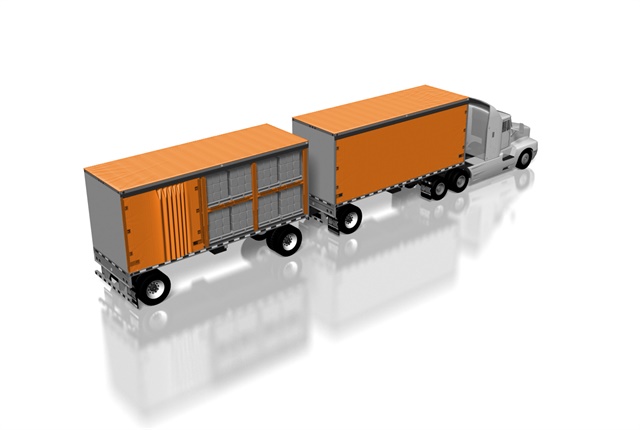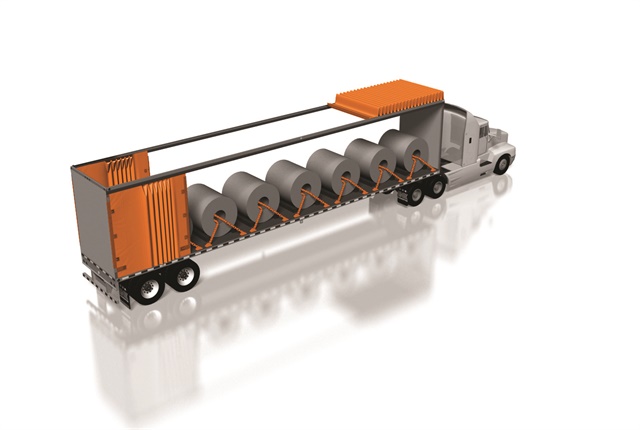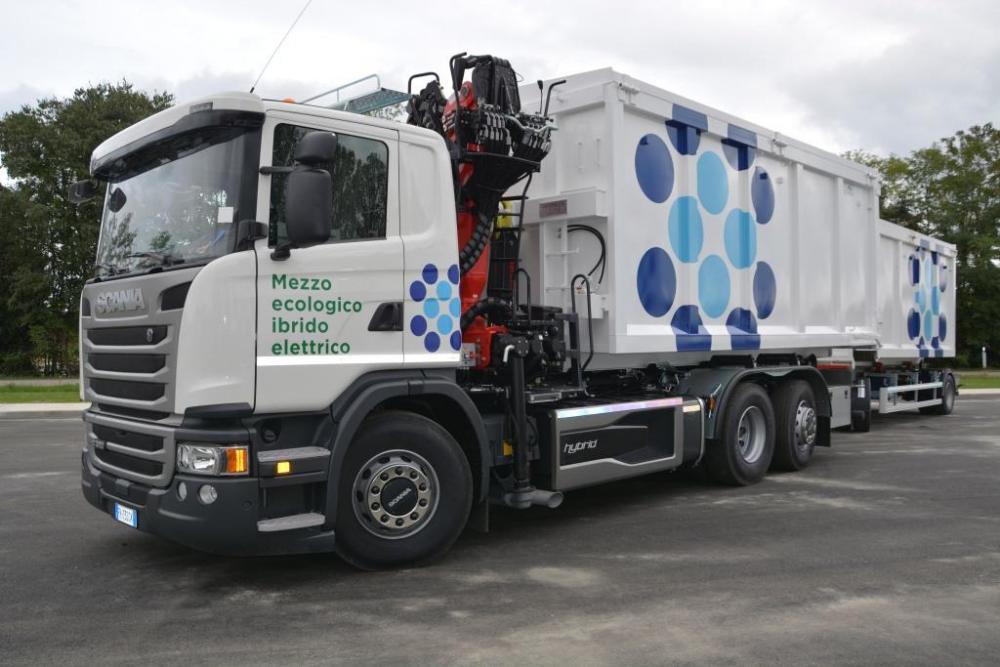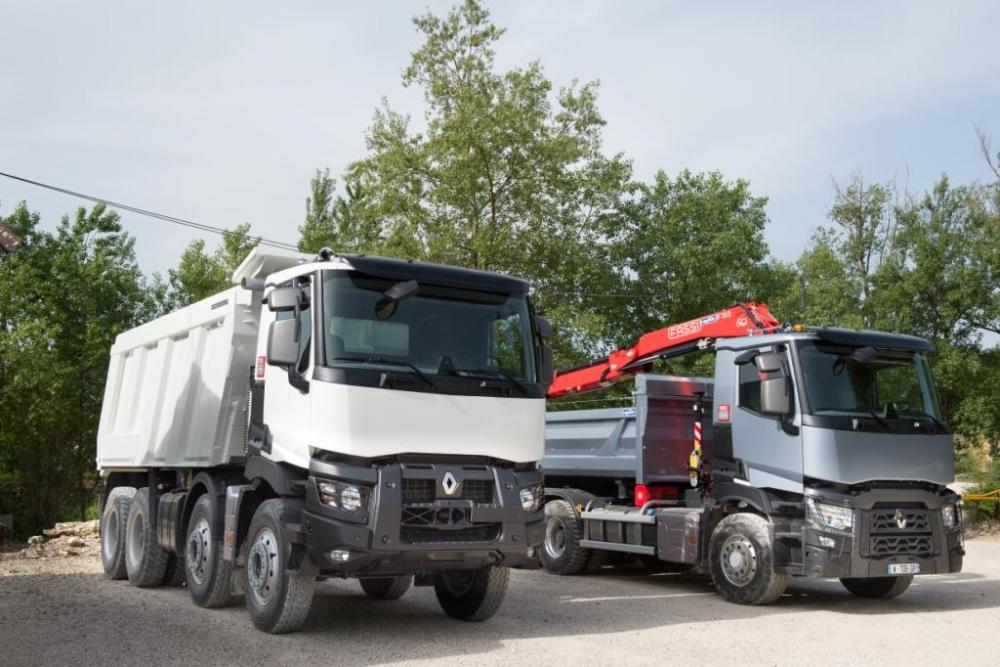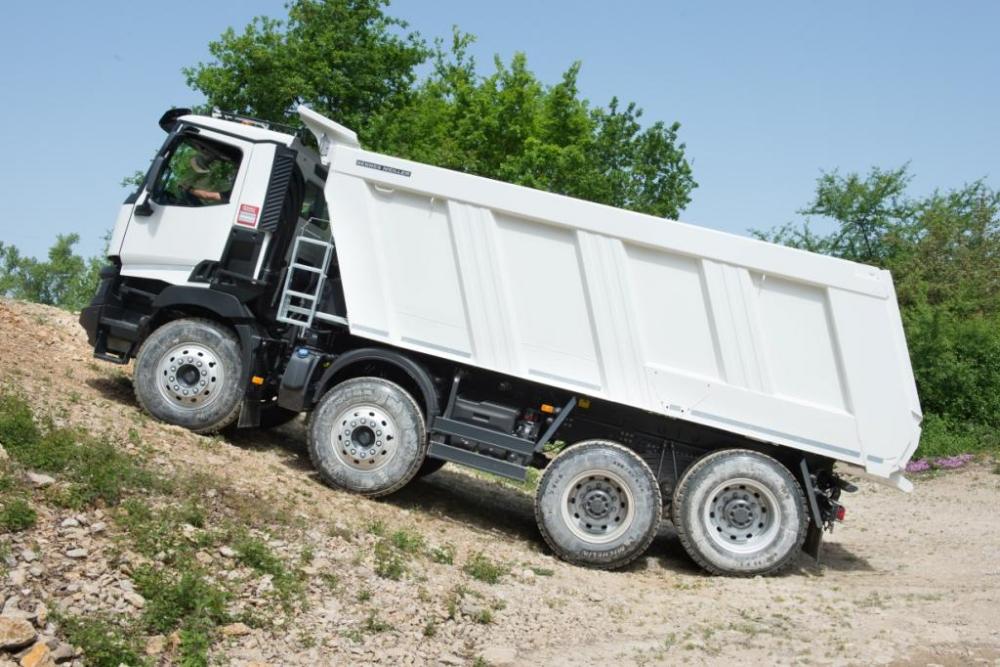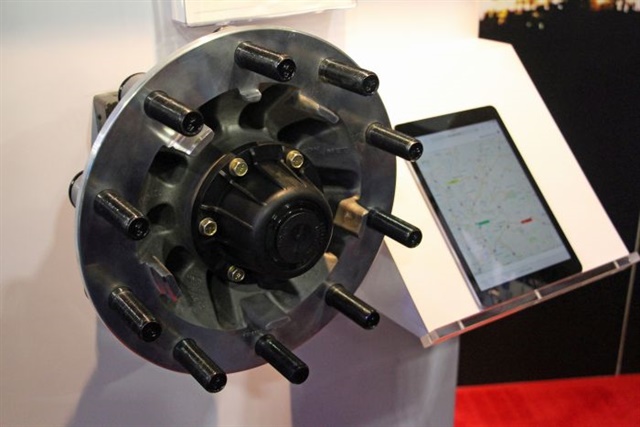
kscarbel2
Moderator-
Posts
17,893 -
Joined
-
Days Won
86
Content Type
Profiles
Forums
Gallery
Events
Blogs
BMT Wiki
Collections
Store
Everything posted by kscarbel2
-
Focus On the Kenworth T880S Today’s Trucking / October 4, 2017 The new T880S from Kenworth made its debut in March 2017, and already it's getting more order activity than the trucks it will eventually replace. That suggests customer acceptance of this new chassis is pretty strong. To see what all the excitement is about, Equipment editor Jim Park took a couple of different trucks for a spin on a recent trip to Kenworth's Seattle, Washington headquarters. .
-
Fleet Owner / October 4, 2017 Grammer offers active seat climate control to keep drivers' backsides cool and dry. What truck driver isn’t familiar with this unpleasant feeling in the summer: back, thighs and buttocks sticking to the seat after hours behind the wheel. The air conditioning only keeps the head and front of the body agreeably cool. Although cooling systems increase comfort by lowering the air temperature in the cabin, the body continues to absorb energy from sunlight, which it then has to get rid of again in the form of sweat. The backside of the body, which accounts for about 25% of an adult’s surface area, is unavailable for eliminating excess heat because it is covered by the seat and therefore out of range of the circulating air. Seat manufacturer Grammer offers its Kingman High Performance driver seat with Active Seat Climate Control as “Kingman Climate” for retrofitting. It is operated using three controls: a switch with two air settings, another for selecting either of two heating levels, and an off button. The system ensures a pleasant sitting climate at all temperatures, according to Grammer, in the summer and the winter. Active Seat Climate Control from Grammer takes advantage of activated charcoal: perspiration that accumulates where the body contacts the seat is removed via the cover material and temporarily stored in a layer of activated charcoal underneath. This keeps the seat’s surfaces pleasantly dry, even in the hottest weather, Grammer claims. In contrast to conventional seat climatization systems, which achieve a cooling effect by directly blowing air onto the body, the Grammer system supports the natural cooling function of human skin. This avoids the health risks of inducing a draft, the manufacturer says, because body moisture is constantly and gently removed. Beneath the layer of activated charcoal, there is a ventilation layer through which cool, dry air flows. This level removes moisture from the activated charcoal. As a result, the seat’s occupant experiences a pleasant temperature at all times, with a dry back and buttocks. After the seat is vacated, the activated charcoal automatically discharges its moisture load. Compared to a seat without climate control, the differences are substantial: the seat’s surface temperature is about 10 percent lower on average and relative humidity is some 20 percent less, according to Grammer's studies. .
-
The Electronic Logging Device (ELD) Controversy
kscarbel2 replied to kscarbel2's topic in Trucking News
ELDs will put supply chains in a vise. And maybe that’s a good thing. Sean Kilcarr, Fleet Owner / October 3, 2017 For as long as I’ve covered both the trucking and logistics industries, they’ve functioned under a freight philosophy called “just-in-time” delivery or “JIT” for short. Put simply, JIT is an inventory strategy companies employ to increase efficiency and decrease waste by receiving goods only as they are needed in the production process, thereby reducing inventory costs. So how does trucking and the now infamous electronic logging device (ELD) mandate play into this JIT philosophy? In short, JIT delivery costs should increase significantly once the ELD mandate hits, simply because truckers will no longer be able to “bend” their operational hours to meet the tight freight scheduling demands of JIT-based supply chains – which, frankly, describes almost all supply chains now. Here’s the combination of trucking, ELD, and freight demand factors that will create something of a “Bermuda Triangle” for shippers from here on out: Trucking moved roughly 10.42 billion tons of freight last year; some 70.6% of all tonnage by mode in North America; Trucking is an industry made up of small business: 91% of all trucking companies operate six trucks or fewer while 97.3% of them operate 20 trucks or fewer; There is a growing shortage of truck drivers, a shortage that will reach 239,000 in five years if current trends persist; Most industry analysts expect the ELD mandate will reduce trucking capacity by 3% to 5% as motor carriers and drivers exit the industry rather than comply with the new electronic logging rule; Trucking capacity is now under further pressure due to the freight demand being spurred in the wake of hurricanes Harvey and Irma – storms that also removed a lot of trucking capacity from the overall supply chain system. John Larkin – managing director and head of transportation capital markets research for Stifel Capital Markets – added some further depth to that thesis in a presentation he made last month at an Iowa Motor Truck Association meeting. “These storms which attacked South Texas and Florida really have created a severe tightening of supply and demand [and] may have accelerated the tightening of supply and demand about six months,” he explained. “We were thinking [that tightening] really wouldn’t become evident until early next year when we had the at least partial impact of the ELD being factored into the equation,” Larkin noted. “[But] here we are; there aren’t enough trucks, turned-down loads are way up, spot rates are astronomical in some parts of the country, [and] trucks are flocking to the high rates – which [is] leaving other parts of the country with too few trucks,” he pointed out. “I think this is the wakeup call that shippers needed, especially those that were so harsh on everyone back in 2015 and 2016.” Larkin bluntly addressed what he dubbed “Neanderthal practices” on the part of shippers in the not-so-recent past and illustrated how that behavior is now starting to come home to roost. “A couple of people sent me letters from shippers at that time which said, ’We’re so grateful for all the great service you’ve provided to us over the years; however, we’re notifying you that we’re going to take our [freight] prices down 10% effective the Monday after next. If you’re willing to absorb that price discount that’s great, we’d be happy to have you in our carrier mix; if not we’ll put your business out to bid and you may win some of that, you may lose all of it. The likelihood of you winning it all back is zero,’” he noted in his remarks. “That’s pretty harsh,” Larkin stressed. “That’s treatment of somebody who’s supposed to be your partner and I think some of those folks are going to see the other end of that here very shortly. It’s hard to feel too sorry for them.” So what are the factors that are going to make shippers feel so “sorry”? For starters, spot rates are spiking fast, Larkin said, initially due to the hurricane recovery efforts – bringing in water and other needed supplies to folks who have been forced out of their homes. “Then you’ll see the next wave of rebuilding ... particularly of South Texas,” he said. “There’s a lot of carpeting, a lot of electronics, a lot of furniture, a lot of wall board that needs to be replaced and all that has to be moved in over the next 12 to 18 months.” It’s not going to be something that’s fixed immediately, he added. “It’s going to have a nice tail to it [and] you have some of the same problems down in Florida. Puerto Rico had a direct hit [from Hurricane Maria] and there’s going to be a lot of material moving down there as well,” Larkin pointed out. So that is part one – hefty freight demand, pretty much scaling up for a year to a year and half. Now for part two: the impact of the ELD mandate on JIT delivery schedules. First of all, Larkin warned that all the talk about “soft enforcement” regarding ELD or related systems after the December 18 compliance deadline isn’t as “soft” as many truckers might believe. “You’re still going to be dinged on your CSA [Compliance Safety Accountability] score if you don’t have one and you’re still going to be fined,” he explained. “The only thing that won’t happen is you won’t be put out of service until there’s a violation on April 1 or later.” That’s going to have some impact Larkin believes, but more regarding the elimination of what he calls “marginal carriers” than it will be on reduced productivity of those that don’t have ELDs now. And here comes the kicker, as Larkin sees it: “The way some small carriers have competed is to cheat. People didn’t use to like to use the word cheat, but that’s essentially what they’re doing. They’re running 14 hours when they’re supposed to be running 11 hours.” He said that brokers give such carriers freight that gets hauled between Chicago to New York in one day – an 800 mile length of haul that you cannot make in 11 hours unless your average speed is 87 miles per hour. “I don’t think the New York State Police would allow you to do that on the New York State Thruway,” Larkin stressed. Thus the time required to legally carry freight shipments by truck is going to expand – and thus it will take longer and cost more to conduct such shipments. And that is not a bad thing, especially if the end result is a driver that is getting paid more and also operating their rig more safely at slower speeds. There’s also another regulatory hurdle to consider in all of this, Larkin added: the national drug/alcohol database or “clearinghouse” that is so far on track for implementation in early 2020. “That will be a mechanism to see if an applicant failed a drug test somewhere else; whether he [or she] has any DUIs or DWIs. That is, for most carriers, a non-starter [and] for most insurance companies a nonstarter,” he explained. “Some people think this rule here will have a bigger effect than ELDs with all the substance abuse that we have in this country – which is another sad story maybe for another day,” Larkin noted. That is very true – with an out-of-control opioid crisis affecting large swaths of the nation, it’s not a stretch to realize that the labor pool from which truck drivers are being hired is being affected. All in all, it adds up to a need to change our supply chain practices; placing a higher value on the services truckers large and small provide. This is a reckoning that is long overdue. -
Lawmakers to Wells Fargo CEO: 'Why shouldn't you be in jail?
kscarbel2 replied to kscarbel2's topic in Odds and Ends
Sen. Warren to Wells Fargo CEO: "You should be fired." . -
Ford plans $14B in cost cuts as part of new CEO's strategy Associated Press / October 4, 2017 Ford Motor Co.'s new CEO plans to cut $14 billion in costs, drop some car models and focus the company's resources on trucks, SUVs and electric vehicles as part of a renewed effort to win over skeptical investors. Jim Hackett, who became Ford's CEO in May, met with around 100 investors in New York Tuesday to lay out his plans for the future. He said getting the company lean and flexible will help it handle the changes the auto industry is facing, from car-sharing to self-driving vehicles, to the shift to electric cars. "I feel a real sense of urgency for what we're doing here," Hackett said. Hackett and his executive team spent the summer reevaluating Ford's operations after former CEO Mark Fields was ousted in May. Hackett traveled to Russia and Turkey and visited North American plants and Ford's Silicon Valley research center as part of his review. He said he was impressed by the talent at Ford, but wants to update factories and speed product development and decision-making. One of his first moves was to pare down the number of people reporting to him. Hackett has eight direct reports, compared to 18 for Fields. Ford told investors it expects to reduce material costs by $10 billion by 2022 through new deals with suppliers and simpler designs. The company plans to share more parts between vehicles and reduce the options available for configuring a car. For example, customers can now order a Ford Fusion sedan in 35,000 possible combinations. Ford is reducing that to 96. Ford also says it will cut $4 billion in engineering costs through 2022 by making fewer prototypes and reducing product-development time. It plans to cut one-third of its engine development costs and redeploy them to electric and hybrid vehicles. Ford plans to introduce 13 new electrics and hybrids over the next five years, including a small electric SUV coming in 2020. The company plans to reallocate $7 billion from cars to SUVs and trucks. Global demand for those vehicles is rising, and they are critical to Ford's bottom line. Jim Farley, head of Ford's global markets, said Ford plans more off-road SUVs like the upcoming Bronco for North America and more low-end small SUVs and seven-passenger SUVs for China. The automaker plans to cut some cars from its lineup, but didn't name them Tuesday. Farley said Ford will still offer small cars, like the Focus, but will stick to more expensive — and more profitable — versions. Ford emphasized that it's open to new partnerships, such as its recent agreement with Indian automaker Mahindra Group to cooperate on mobility, electric cars and other projects. It is also working with ride-hailing company Lyft on self-driving technology and with China's Zotye Automobile Co. about an electric car partnership. The company says its vehicles will get smarter, with 90 percent of its global vehicles getting modem connectivity by 2020. That will allow things like software updates or apps that help drivers find parking. Ford can differentiate itself by offering, say, connected commercial vans that help small businesses keep track of their deliveries. Marcy Klevorn, Ford's head of mobility, said Ford launched a medical van service eight weeks ago that can pick up wheelchair-bound patients and take them to the doctor. The service uses Ford-developed software for scheduling appointments, and it will help the company figure out ways that consumers will eventually use self-driving vehicles. "We have created a box of assets that we can pull out and use for various things," Klevorn said. Ford stuck to its previous guidance for 2017 on Tuesday. The company expects adjusted earnings of $1.65 to $1.85 for the full year. Ford earned $1.76 per share 2016. Hackett, the former CEO of office furniture company Steelcase Inc., joined Ford's board in 2013. He briefly led Ford's mobility unit before being tapped as CEO. Ford hired Hackett, in part, to turn around its share price, which has languished for the last two years even as rival General Motors Co. saw its shares rise to their highest level in seven years. Ford sunk below Tesla Inc. in market value earlier this year, even though it earned $4.6 billion in 2016 and Tesla has never made a full-year profit. Ford's shares rose 2 percent to close at $12.34 Tuesday before Hackett's presentation. It's not yet clear if his pitch will improve investors' confidence. "Straddling the now and the future will be tricky, especially in terms of profitability," said Michelle Krebs, an executive analyst for the car-buying site Autotrader.com. Investors have been critical of Ford for waiting too long to bring a long-range electric vehicle to market, as GM did with the Chevrolet Bolt. They also struggled to understand Ford's plans to compete on autonomous cars. "In the past few years, Ford simply hasn't had a compelling narrative that investors could latch onto," Barclay's analyst Brian Johnson wrote in a recent note to investors. .
-
Jason Cannon, Commercial Carrier Journal (CCJ) / October 3, 2017 North American Class 8 net orders for September hit 22,100 units according to preliminary data released this week by FTR, a month-over-month increase of 7 percent and 62 percent above a year ago. “With a generous factor bestowed on what is typically the second weakest order month of the year, seasonal adjustment boosts September’s order performance to its highest level in over two years at 26,200 units,” said another market analyst. North American Class 8 orders for the past 12 months have totaled 239,000 units, a sign of a recovering heavy truck market that has strengthened over the summer and is expected to climb higher as the year comes to a close. “Order totals never got that low and followed cyclical trends,” says Don Ake, vice president of commercial vehicles at FTR. “This is a healthy, growing truck market, which is in excellent position for greater expansion in 2018.” Ake says strong freight growth generated by a more robust U.S. economy will spur demand for additional trucks next year. “Factor in the loss of productivity from the ELDs,” he says, “and fleets will have to expand capacity to haul the available freight.”
-
Matt Cole, Commercial Carrier Journal (CCJ) / October 3, 2017 The Federal Highway Administration is looking to revise the definition of automobile transporter to reduce the regulatory burdens on the industry. FHWA says automobile transporters are typically defined as “specialized equipment designed and used for the transport of cars” and that car haulers “must be capable of carrying the cars as cargo on the truck tractor itself.” Current regulations state “a tractor and semitrailer engaged in the transportation of automobiles may transport motor vehicles on part of the power unit,” and FHWA has interpreted that to mean vehicles that cannot haul cars on the tractor itself are not considered auto haulers. The agency believes it can change its interpretation to include trucks that are not able to carry vehicles on the power unit. It wants to do so without action from Congress. In order to revise the definition, FHWA is seeking public comment on the possible inclusion of non-cargo-carrying tractor, high-mount trailer combinations as part of the definition. The agency says expanding the definition would eliminate standard length restrictions for these trucks so they can transport additional vehicles and operate more efficiently. Defining the high-mount combination as an automobile transporter would trigger the use of the same length allowances that currently apply to a traditional automobile transporter, and no state would be able to impose a length limitation of less than 65 feet, a front overhang of less than 3 feet or a rear overhang of less than 4 feet. FHWA is asking commenters to answer the following questions in their comments: How will the inclusion of a high-mount tractor-trailers in the definition impact the flow of interstate commerce? Are there safety issues with high-mount tractor-trailers as it relates to the operation of this vehicle configurations? What are implementation implications, such as roadside enforcement and changes to state laws? What state laws are currently in place regarding a high-mount tractor-trailers? Are there states that allow the high-mount tractor-trailers to operate under the same length provisions as traditional automobile transport? Is there any other information relating to safety, vehicle productivity or infrastructure preservation relevant to these questions? Comments can be made here through Monday, Oct. 16. .
-
A look back: 100 years of Chevy trucks Aaron Marsh, Fleet Owner / October 3, 2017 Next year marks the 100th anniversary of Chevrolet's first production truck, the 1918 One-Ton. It'd be a shame to let such a milestone go by uncelebrated, and of course, Chevy isn't. Not only are there 2018 Centennial Edition Silverado and Colorado pickups heading to dealerships before the end of the year, the automaker has also launched a 100-day event showcasing customers' pickups and loyalty. Chevy also released a crop of photos, illustrations and vintage advertisements showcasing the generations of its pickup trucks as they evolved over the years. Check out our slideshow of them with some more info from the OEM. Through the decades, it also seems Chevy became something of a broken record when it comes to its trucks, repeating a lot of the same things like "reliable," "strong," "work" and "dependable." Photo gallery - http://fleetowner.com/hd-pickup-van/look-back-100-years-chevy-trucks#slide-0-field_images-227881
-
Buffet’s Berkshire Hathaway Buys 38.6% Stake in Pilot Flying J
kscarbel2 replied to kscarbel2's topic in Trucking News
Berkshire Hathaway Buys 38.6% of Pilot Flying J Transport Topics / October 3, 2017 Warren Buffett to Boost Stake to 80% in 2023 Warren Buffett’s Berkshire Hathaway Inc. bought a stake in Pilot Travel Centers LLC, owner of the Pilot Flying J truck stop chain, and detailed plans to become the company’s biggest shareholder in six years. Berkshire Hathaway agreed to acquire 38.6% of Pilot Flying J, a closely held company based in Knoxville, Tenn., according to a statement Oct. 3. The Haslam family will continue for now to hold the majority of Pilot Flying J, with Cleveland Browns owner Jimmy Haslam remaining as chief executive officer of the company. The Maggelet family’s FJ Management Inc. will keep its 11.3% stake in Pilot Flying J until 2023, when Buffett plans to become the company’s biggest shareholder. Buffett will boost his stake to 80% at that point, leaving the Haslams with a fifth of the business. Financial terms of the deal weren’t disclosed. Haslam said in an interview he hit it off with Buffett after being introduced earlier this year by Chicago merchant banker Byron Trott, who suggested the Berkshire chairman buy a minority stake in the truck stop operator. Pilot Flying J generates annual revenue of more than $20 billion and was named the 15th largest private company in the U.S. by Forbes magazine. “Jimmy Haslam and his team have created an industry leader and a key enabler of the nation’s economy,” Buffett, 87, said in the statement. “We look forward to a partnership that supports the trucking industry for years to come.” Trott’s BDT Capital Partners is selling its minority stake in Pilot Flying J as part of the transaction. The investment marks a return to large dealmaking for Buffett, who’s had a relatively quiet 2017 after walking away from a $143 billion attempt to acquire Anglo-Dutch consumer goods giant Unilever. His bid to acquire Oncor Electric Delivery Co. was bested by Sempra Energy in August, after activist investor Paul Singer bought up the target’s debt to block Buffett and back the rival suitor. Pilot Flying J started life as a single Pilot gas station in Gate City, Va., in 1958. It now has more than 750 locations across North America and employs 27,000 people. Buffett said by phone he isn’t going to lose sleep over potential threats from autonomous vehicles. “Trucks are going to be around for a very long time. Who knows when driverless trucks are going to come along and what level of penetration they have,” Buffett said in an interview. “There is nothing that we own that doesn’t have something in the future that might affect it.” Pilot Flying J has been run by Haslam, the son of Pilot Corp. founder Jim Haslam, since 1996. The brother of Tennessee governor Bill Haslam, Jimmy has owned the Cleveland Browns National Football League franchise since 2012, when he paid more than $1 billion to buy control of the team from Randy Lerner. Pilot’s former president, Mark Hazelwood, and three other former executives under indictment are set to go on trial Oct. 31 in federal court in Chattanooga, more than four years after an FBI raid on the headquarters of Pilot Flying J following an investigation into diesel fuel rebate fraud. Jimmy Haslam has not been accused in the multimillion dollar rebate scheme. Fourteen former Pilot sales executives have previously been charged, pleaded guilty and agreed to cooperate with the government while awaiting sentencing. . -
Heavy Duty Trucking (HDT) / October 3, 2017 Warren Buffet-run holding company Berkshire Hathaway has made a significant minority investment in truckstop chain Pilot Flying J, with plans to become the majority stakeholder by 2023, the companies announced. The Haslam family will continue to own a majority of Pilot Flying J. Jimmy Haslam will remain its chief executive officer along with current President Ken Parent and the company’s management team. Under the terms of the deal, Berkshire will acquire a 38.6% stake in the company with plans to become the majority stakeholder by 2023. At that point, the Haslam family will retain a 20% ownership share. “Pilot Flying J is built on a longstanding tradition of excellence and an unrivaled commitment to serving North America’s drivers,” said Warren Buffett, chairman, president and CEO of Berkshire Hathaway. “Jimmy Haslam and his team have created an industry leader and a key enabler of the nation’s economy. The company has a smart growth strategy in place and we look forward to a partnership that supports the trucking industry for years to come.” Pilot Flying J will remain headquartered in Knoxville, Tennessee. The truckstop company employs 27,000 people in 750 locations across the U.S. and Canada. The investment from Berkshire Hathaway is seen as an opportunity for growth. “Given the impeccable reputation of Warren Buffett’s Berkshire Hathaway, and our shared vision and values, we decided this was an ideal opportunity,” said Jimmy Haslam, CEO of Pilot Flying J. “As a family business that has evolved and prospered over the last six decades, we knew that any potential partner would need to share our commitment and have a proven track record as a long-term investor. We have that in Berkshire Hathaway – they believe in our strategy, support our team and are excited to see Pilot Flying J grow. We are honored and humbled to partner with them.” .
-
Volvo Launches Natural Gas Trucks in Europe Heavy Duty Trucking (HDT) / October 3, 2017 Sweden's Volvo Trucks has introduced two natural gas heavy-duty trucks to the European market that the OEM claims can cut CO2 emissions by 20% to 100%. The new trucks, the Volvo FH LNG and Volvo FM LNG, can run on either biogas or natural gas and are compliant with Euro 6 engine-emissions regulations. Volvo claims that the biogas version can cut CO2 emissions by 100% compared to the regular natural gas version that reduces CO2 emissions by 20%. This relates to emissions from the vehicle during usage, known as tank-to-wheel, according to the company. “We regard LNG, liquefied natural gas, as a long-term first choice alternative to diesel, both for regional and long-haul truck operations where fuel efficiency, payload, and productivity are crucial. With a higher proportion of biogas, climate impact can be reduced far more,” said Lars Mårtensson, director environment and innovation at Volvo Trucks. “For transport operations in urban environments, where range is not as critical, electrified vehicles will play a greater role in the future," he added. "Our vision is that trucks from Volvo will eventually have zero emissions, although the way of achieving that is not by one single solution, but through several solutions in parallel.” The trucks will use 15% to 20% less fuel than current gas-powered trucks, according to Volvo. Using LNG will give the vehicles the greatest possible operating range. Volvo Trucks noted that it is currently working with gas suppliers and customers to develop the expansion of LNG infrastructure in Europe. This effort is being supported politically in many countries and by the European Union. A strategy for expanding LNG infrastructure is also included in the European Commission and member states’ action packages for securing Europe’s long-term energy supply. “Our new trucks running on liquefied natural gas or biogas produce a far smaller climate footprint than diesel trucks do," said Mats Franzén, product manager-- engines at Volvo Trucks. "In addition, they are much more fuel-efficient than the gas-powered trucks available on the market today. This makes gas more viable as a replacement for diesel even for heavy long-haul operations.” .
-
Possible Photo of Tesla’s Electric Truck Leaks on Reddit Heavy Duty Trucking (HDT) / October 3, 2017 A post on the Tesla "subreddit" of Reddit.com shows a concept vehicle that appears to be Tesla’s unannounced electric road tractor. In the photo, an unidentified silver tractor or at least a cab is visible sitting on a flatbed trailer in a dirt lot. In an article on The Verge, Tesla neither confirmed nor denied whether it was its electric big rig, only saying that its policy was to “always decline to comment on speculation.” There is no badging on the truck to indicate that it is from Tesla, but commenters on the post pointed out some similarities in the design when compared to the teaser image that Tesla released in April. Interestingly, the original post in the Tesla subreddit has since been deleted and the Reddit user who posted the original photo has deleted their profile. The photo was later reposted by a second user who managed to save the photo before it was deleted. We may not have to wait long to find out if this is indeed Tesla's electric truck. The company plans to unveil the Tesla Semi on Oct. 26, at an event in Hawthorne, Calif. .
-
Kinedyne unveils Ioad-rated curtain-side system
kscarbel2 replied to kscarbel2's topic in Trucking News
Kinedyne's New Curtain-Side Solutions Address Changing Logistics Demands Heavy Duty Trucking (HDT) / October 3, 2017 ATLANTA – Cargo-control company Kinedyne introduced several new products to help make cargo access faster and easier as the effect of e-commerce continues to spread beyond traditional final-mile transportation. “E-commerce is creating new cargo challenges, and Kinedyne is delivering new cargo solutions,” said Paul Wolford, vice president of sales and marketing for Kinedyne, during the inaugural North American Commercial Vehicle Show. “In the beginning, e-commerce had the greatest disruptive effect on end-of-the-line, also known as ‘final-mile’ or ‘last-mile’ delivery activities, but now companies throughout the supply chain are looking for ways to minimize transportation costs for cargo as it moves more swiftly throughout multiple transportation modes.” Wolford explained that Kinedyne is bringing new technologies to North America that will help supply chains optimize the speed, cost and efficiency of controlling cargo as it transitions from its original state (as a raw commodity) to a high-density state (in shipping and in hubs) to a low-density state (as it makes its way through the last mile). Among the products introduced were a load-rated curtain-side system for trailers, a unique double-decking system designed specifically for curtain-side applications, and a fast-access curtain-side system designed for urban operations. The lightweight curtain-side system opens and closes at lightning-fast speeds, but is engineered to restrain lateral cargo movement. The system is suitable for trailers up to 53 feet. With rapid access on both ends, the cargo space can be opened and closed within mere seconds. The lightweight system is versatile and adaptable to a number of logistical challenges, such as palletized cargo, double-decking, rack-mounted goods and the transport of beverages A load-rated curtain gives a trailer the combined advantages of flatbed access and a van’s walled structure. The double-decking system maximizes load density, allowing loading and unloading access of both cargo levels from the sides and rear, and all of its components conveniently stow in the trailer to avoid loss or damage. “Popular in Europe, load-rated curtains become part of a vehicle’s overall load securement system,” Wolford said. “They save time, weight and fuel, while providing sideways restraint to otherwise fully secured loads up to the curtain’s stated rating.” At this time in the U.S., those loads must still be otherwise restrained, but Kinedyne says it will work to get regulations changed to reflect those in Europe, where the load-rated curtains actually are legal as a securement device. Forward and rear cargo restraint must still be provided by headboards, tailboards and other traditional load securement methods. The double-decking system for curtain-side systems lets users optimize cargo capacity. The system accommodates cargo of varying dimensions and heights and is easy and intuitive to operate, according to the company. System configurations can support between 13,000 and 24,000 pounds on their second loading levels. A fast-access curtain-side system for the urban core was specially developed for fast and repetitive city distribution and short truck bodies of up to 28 feet. It’s ideal for quick and safe side loading and unloading in busy city centers, according to the company The cargo space can be swiftly opened, accessed from both sides and closed again within seconds. This system can be combined with a sliding roof and rear doors, creating a totally open cargo access environment. A flexible quick-release latching system for curtain-side operations is simple, versatile and fast. The system is particularly well suited for truck bodies that are tapered at their top, Kinedyne says. Skewed body construction often occurs when unique cargo must be accommodated, such as beverage and glass truck applications. This ergonomic system replaces cumbersome buckle closures and heavy roll-up doors that require stretching and straining to close. The sliding roof system uses patented folding plates and can be paired with an extended range of aluminum rails or combined with other curtain-style rapid-access products. The sliding roof makes the loading and unloading of long cargo easy and convenient and allows the use of over-head cranes. Users can choose between a traditional rear-to-front sliding roof or a sliding roof that opens and closes at both ends. Special patented security accessories are also available. All Kinedyne’s curtain-side and retractable roofs are equipped with advanced, patented roller technology that makes opening and closing them faster, safer and less ergonomically challenging. The three-roller design includes a steel horizontal roller that ensures effortless sliding and prevents the curtain from binding even when being briskly opened and closed. To bring these new technologies to North America, Kinedyne tapped the resources of its sister company, Wistra Cargo Control, and one of its European suppliers, Versus-Omega. All products are expected to be commercially available by January 2018. . -
Trucking is trending fast towards electrification
kscarbel2 replied to kscarbel2's topic in Trucking News
Electrification becoming more affordable for heavy trucks Trailer-Body Builders / October 3, 2017 Manufacturers that build cars and heavy trucks alike increasingly believe electricity – whether as stand-alone power or as part of a hydrogen-based fuel cell system – will play a critical role in powering motor vehicles in the not-so-distant future. At the recent North American Commercial Vehicle (NACV) show, Jay Craig – president and CEO of Meritor – noted that the cost of a 100 kilowatt per hour (KwH) battery pack declined from $120,000 in 2009 to $25,000 today, with predictions that costs will drop to $15,000 by 2025. That low costs can make electricity a more affordable power solution for a heavy-duty vehicle, he explained, which is why Meritor is now developing a platform of electric drive axles and suspensions. “Essentially, we’re focusing on integrating an electric motor into the differential carrier,” Craig said during a presentation last week at the show. "As we look to future emissions regulations and our customers’ desire for more efficiency, we’re developing new and innovative solutions to expand our product portfolio." He added that Meritor’s flexible “e-carrier” design will be the foundation for various drivetrain configurations, including full electric, hybrid, single or tandem axles with various options based on application. But it’s not just heavy-duty vehicles that are being redesigned with electricity in mind. “General Motors believes in an all-electric future,” emphasized Mark Reuss, executive vice president of product development, purchasing and supply chain for General Motors this week. Although that future won't happen overnight, GM is committed to driving increased usage and acceptance of electric vehicles through no-compromise solutions that meet our customers' needs,” he said. In the next 18 months, Reuss noted that GM will introduce two new all-electric vehicles based off learnings from the Chevrolet Bolt EV compact car. They will be the first of at least 20 new all-electric vehicles that will launch by 2023. However, given customers' various needs, he aid getting to a zero emissions future will require more than just battery electric technology. It will require a two-pronged approach to electrification — battery electric and hydrogen fuel cell electric depending on the unique requirements. That’s why GM also introduced SURUS this week, which is short for the “Silent Utility Rover Universal Superstructure.” SURUS is a fuel cell powered, four-wheel steer concept vehicle on a heavy-duty truck frame that’s driven by two electric motors. With its capability and flexible architecture, SURUS could be used as a delivery vehicle, truck or even an ambulance — all emissions free, Reuss added. Back where heavy-duty truck front, Craig said Meritor is focused on developing several new “electrified” products: · An integrated two-speed electric carrier platform capable of delivering 150 to 200 kilowatts of continuous power for mounting on existing axle platforms. That will allow it to fit a wide variety of applications on rigid and independent suspensions · A new electrified axle dubbed the “13Xe” will be a rigid axle, capable of 200 kilowatts of continuous power and featuring customizable gearing to cover linehaul, school bus, refuse, pickup and delivery, utility and other applications · Electricity-driven independent suspensions for applications such as military, emergency, off-highway and construction vehicles that will benefit from increased performance as well as better ride comfort and handling · An electric eCorner module for low-floor applications such as medium-duty Class 4 and 5 trucks, pickup and delivery vehicles, plus transit buses. The company is developing air disc braking systems specifically for what it calls “e-axles,” for us in hybrid or all-electric trucks; braking packages designed to reduce weight on wheel-ends, according to Craig. Those components will be part of a demonstration vehicle to be built in 2018, with production beginning as early as 2019. “These emerging electric solutions reflect Meritor’s commitment to develop axle, suspension and brake technologies that support our technology roadmaps and future product plans based on our customers’ needs,” Craig said. Meritor also highlighted several other new products and endeavors at the NACV show last week: · The company has “optimized” its EX+ air disc brake (ADBs) for tractors and trailers to reduce product weight by 10 lbs. per brake. Those “optimized” EX+ ADBs will be available to OEMs in 2018. · The Meritor Tire Inflation System (MTIS) for trailers will now include the ThermALERT wheel-end heat-sensing system as standard equipment beginning this month – a system that activates an indicator light when wheel-end temperatures are abnormally high. Meritor will also offer an five-year warranty without placing an additional premium on MTIS as well. · Meritor is also offering a new “value brand” for aftermarket parts called Mach that offers global customers “all-makes” products designed and engineered to industry standards at “affordable prices.” · Designed for second as well as third owners, Mach-branded products include an assortment of suspension, steering, brake and drivetrain components that will be available initially in North America before the end of 2017 and then will launch in Europe, South America and Australia at a later date. All of the Mach-branded parts will come standard with a one-year warranty. -
Ford's Hackett calls for sweeping changes in vehicle development, investment Automotive News / October 3, 2017 DETROIT -- Ford Motor Co. CEO Jim Hackett on Tuesday outlined sweeping changes that include redirecting a third of the company's internal-combustion engine expenditures to vehicle electrification and cutting costs by $14 billion. He said the automaker would develop new vehicles faster, shift $7 billion in product-development funding from cars to more profitable light trucks and build Internet connectivity into Ford’s full U.S. lineup within two years. The updates are designed to improve Ford's competitive fitness, a term Hackett has used to describe how the automaker must evolve to stay ahead of competition. He said Ford leadership must focus on problems “near, now and far” simultaneously so that the company will be prepared to thrive in the future without losing sight of its current, highly profitable operations. "When you're a long-lived company that has had success over multiple decades the decision to change is not easy -- culturally or operationally," Hackett said. "Ultimately, though, we must accept the virtues that brought us success over the past century are really no guarantee of future success." Hackett's goals include aggressive cost-cutting. He plans to slash internal combustion expenses from $1.7 billion in 2016 to $1.2 billion by 2022 and redeploy that money to electrification efforts. The company said Monday it would dedicate a team to expanding the number of electric vehicles Ford will offer, and said in its investor presentation Tuesday that it would expand its battery electric vehicle lineup “post 2020.” Overall, Ford plans to reduce the rate of growth in automotive costs by half through 2022. It plans to cut $10 billion in incremental material outlays and reduce engineering costs by $4 billion over the next five years. It will achieve that through utilizing common parts and implementing technology in the design process so it doesn’t spend as much on building prototypes. Ford said it's reallocating $7 billion of capital from cars to light trucks. Earlier this year, Ford decided to move production of the next-generation Focus sedan from North America to China, saving money. The automaker said that shift in spending on light-vehicle development would result in fewer car nameplates but did not provide specifics. It did not say it would exit any vehicle segments, but rather that it would continue in a more focused, reduced manner. Jim Farley, Ford’s president of global markets, said the automaker would target what utility vehicles it offers to specific markets. For example, he said Ford was planning multiple utility vehicles in North America in the “authentic, off-road, capable” category, or offering larger, three-row SUVs in places such as China. On the car side, Ford will focus on higher-revenue sub-segments, such as hatchbacks or performance variants. Farley also confirmed that Ford’s 2021 autonomous vehicle will not be a Fusion sedan, the midsize car on which it has been testing the technology. Ford has said that the key to autonomous vehicles will be high utilization rates. “The best model to do that is to have a diverse group of business and services to utilize the vehicle all day long,” Farley said. That could result in more partnerships. Ford recently hatched deals with Domino’s to explore autonomous pizza delivery, and with Lyft to eventually deploy autonomous cars on its network. It also plans to simplify what vehicles customers can order. Ford said the team has identified a more than 90 percent reduction of orderable combinations in the next-generation Escape. In addition, it's moving from 35,000 combinations in the current Fusion to 96. "We really offered too many options," Hackett said. Ford also plans to add Internet connectivity in every one of its vehicles in the U.S. by 2019. About 55 percent of its lineup is connected today. By 2020, 90 percent of Ford's new global vehicles will feature connectivity, the company said. The automaker is still exploring how it will commoditize that connectivity and what services it could offer. “I don’t feel that where we are competitively is where we should be,” Hackett said, adding that that could be fixed rather quickly. Ford said it was reaffirming its long-term goal of an 8 percent operating margin on its core automotive business as it looks to boost overall profitability. It also reaffirmed its financial guidance of a $9 billion pretax profit for 2017. “It’s clear that Jim Hackett and team are preparing for the future, balancing a near term vision for its product portfolio with longer term goals for electric vehicles and autonomous driving,” Akshay Anand, executive analyst for Kelley Blue Book, said in a statement. “Partnerships is also a theme that Ford is focused on, as is the industry as a whole, which makes sense given how quickly automotive has shifted towards technology. Regardless, Ford’s biggest challenge may be delivering shareholder value and gains in a time where many other company stocks have been booming.” Note the Disqus comments - http://www.autonews.com/article/20171003/OEM02/171009909/ford-hackett-strategic-plan-wall-street
-
GM to combine Asian, Latin American operations as it ramps up electric Automotive News / October 3, 2017 BEIJING -- General Motors said on Tuesday it will combine operations outside of China and North America into a new organization based in Detroit, further scaling back its presence in money-losing markets as it ramps up spending on electric vehicles. GM said the Detroit automaker will combine the leadership of its International region, which includes Southeast Asia, India and Oceania, with its South America region, effective Jan. 1, 2018. The new company will be led by Barry Engle, currently GM executive vice president and president of GM South America. Engle will be based in Detroit and report to GM President Dan Ammann. Engle joined GM in September 2015. GM's Latin American and Asia/Pacific operations both lost money in 2016, excluding profits from GM's operations in China. “Our strategy (is) to refocus our traditional business operations to free up the resources and financial power needed to really step into the next chapter of the automotive industry,” Stefan Jacoby, executive vice president of GM's International Operations told Reuters. Jacoby will retire at the end of this year. On Monday GM outlined plans to add 20 new battery electric and fuel cell vehicles to its global lineup by 2023, financed by robust profits from sales of gasoline-fueled trucks and sport utility vehicles in the United States and China. Under CEO Mary Barra, GM has shrunk its international operations over the past five years, ceasing manufacturing in Australia and Indonesia, and significantly restructuring its Thai operations. The automaker is winding down efforts to sell cars in India and turning its manufacturing facilities there into an export hub. GM also exited Europe by selling those operations, essentially its German unit Opel, to French automaker Peugeot SA. Barra's strategy is starting to win over investors. On Monday GM shares closed at $42.15, their highest since the company's 2010, post-bankruptcy initial public offering. GM shares continued to rise on Tuesday, closing the day up 3 percent to $43.45.
-
2011 Mack Trident MP8 Air compressor carbon
kscarbel2 replied to Transerv Logistics's topic in Air Systems and Brakes
May I suggest you contact Wabco Australia directly. WABCO Australia Pty Ltd Unit 3, 8 Anzed Court Mulgrave, Victoria 3170 Australia Phone: +63 3 8541 7000 Hotline: 1300-4-WABCO Let us know what their local engineers say. -
Hino to launch heavy trucks in North America
kscarbel2 replied to kscarbel2's topic in Trucking News
https://www.bigmacktrucks.com/topic/48219-hinos-canadian-plant-reaches-1/?tab=comments#comment-357054 -
Scania Group Press Release / October 3, 2017 The Italian waste management company Contarina is taking Scania’s hybrid trucks into operation to reduce carbon emissions, fuel consumption and noise. With nearly 700 trucks, Contarina services 50 municipalities in the Province of Treviso with a total population of more than 550,000 people. “We continuously renew our fleet with the aim of seeking innovative and sustainable solutions,” says Franco Zanata, the President of Contarina. “We wish to limit our impact on the environment and at the same time ensure efficient and safe driving conditions for our drivers.” The company has previously invested in smaller less polluting vehicles and now, says Zanata, “enters into a partnership with Scania to enhance sustainability also for heavier trucks. This is a major investment in our fleet to become more and more environmentally friendly.” The hybrid solution allows a truck to operate solely on electric power for up to two kilometres. Electric operations are primarily intended for situations such as urban operations at night in noise sensitive areas. In the electric mode, the sound level is below 72 dB(A). The electric motor is combined with Scania’s 9-litre Euro 6 engine, which can be operated on 100 percent biodiesel. With this latter fuel, CO2 can be reduced by as much as 92 percent. .
-
Volvo Group Press Release / October 3, 2017 Volvo Trucks is now introducing Euro 6-compliant heavy duty trucks running on liquefied natural gas or biogas. The trucks can cut CO2 emissions by 20 to 100 per cent. With a firm focus on new, energy-efficient technology for gas-powered vehicles, Volvo Trucks makes it possible to significantly reduce the climate impact of heavy regional and long-haul transport operations. “We regard LNG, liquefied natural gas, as a long-term first choice alternative to diesel, both for regional and long-haul truck operations where fuel efficiency, payload and productivity are crucial. With a higher proportion of biogas, climate impact can be reduced far more. For transport operations in urban environments, where range is not as critical, electrified vehicles will play a greater role in the future. Our vision is that trucks from Volvo will eventually have zero emissions, although the way of achieving that is not by one single solution but through several solutions in parallel. LNG is one of them,” says Lars Mårtensson, Director Environment and Innovation at Volvo Trucks. The new trucks, the Volvo FH LNG and Volvo FM LNG, can run on either biogas, which cuts CO2 by up to 100 per cent, or natural gas which reduces CO2 emissions by 20 per cent compared with diesel. This relates to emissions from the vehicle during usage, known as tank-to-wheel. Compared with current gas-powered trucks available on the market, Volvo Trucks’ new vehicles use 15 to 25 per cent less fuel. LNG gives the trucks the greatest possible operating range. “Our new trucks running on liquefied natural gas or biogas produce a far smaller climate footprint than diesel trucks do. In addition, they are much more fuel-efficient than the gas-powered trucks available on the market today. This makes gas more viable as a replacement for diesel even for heavy long-haul operations,” says Mats Franzén, Product Manager Engines at Volvo Trucks. Volvo Trucks is now working together with gas suppliers and customers to develop the expansion of LNG infrastructure in Europe. This development is also being supported politically in many countries and by the EU. A strategy for expanding LNG infrastructure is also included in the European Commission and member states’ action packages for securing Europe’s long-term energy supply. .
-
Renault Trucks Press Release / October 3, 2017 Renault Trucks is adding a robotised gearbox, Optidriver Xtended, to its C and K ranges, fitted with extra-slow (crawler) gears. This enables customers working under severe operating conditions to have the option of using one or two additional extra-slow gears in the C and K range trucks. Vehicles in the Renault Trucks C and K construction ranges can now be fitted with a robotised extra-slow gearbox, the Optidriver Xtended. Depending on their requirements, customers can choose one or two additional gears positioned above the first gear. These enable drivers to move their vehicles at very slow speeds (between 0.7 and 2 km/h) in complete safety and with high precision. Optidriver Xtended improves driving comfort and the manoeuvring capabilities of trucks in difficult driving conditions, as well as facilitating steep hill starts and/or full-load starts. Optidriver Xtended also reduces operating costs for customers as less stress is placed on the clutch and wear time is extended. The 13-speed slow version (Over Drive*) is recommended for customers operating in the construction and heavy construction industries, in heavy transport situations exceeding 80 tons, as well as applications requiring constant, slow truck movement, such as spreaders and sweepers. The 14-speed extra-slow version (Direct Drive and Over Drive*), available only on all-wheel drive vehicles, is designed to meet the extreme demands of quarries, mines, forests and oil and gas operations. * Direct Drive: last gear at 1 and Over Drive: last gear at 0.79 .
-
Hino to launch heavy trucks in North America
kscarbel2 replied to kscarbel2's topic in Trucking News
Yes Timmy, the US market bonneted Hinos use a modified 500 Series COE cab. --------------------------------------------------------------------------------------------- The original Freightliner Business Class conventional (1991-2001) used a COE cab from the Mercedes-Benz model LN. The Freightliner Argosy II COE shares the same cab as the Century Class, Columbia and Coronado (the Argosy variant is 305mm wider). The Mack MS Mid-Liner COE shared the same cab used on the Mack CS Mid-Liner conventional, and Renault’s C, CBH, CLM, CLR and GBC series conventional cab models. The DAF XT conventional is based on the DAF XF105. Scania's T-Series used the truckmaker's Bertone-designed 4-Series COE cab. The global market Volvo NH conventional was based on the FH/FM COE cab. The NH was full-width like the FH COE, while the North American market VN was a narrowed variant. And the impressive Iveco "Powerstar" conventional uses the Stralis COE cab. -
59 dead, 527 wounded/injured in Las Vegas shooting
kscarbel2 replied to kscarbel2's topic in Odds and Ends
Or how many toddlers died forgotten in cars over the last 12 months. How many people are murdered in Chicago each month? How many in Detroit each month? -
Shell touts progress with new oils, expands Rotella line
kscarbel2 replied to kscarbel2's topic in Trucking News
-
Heavy Duty Trucking (HDT) / October 2, 2017 At the North American Commercial Vehicle show in Atlanta, ConMet introduced the SmartHub, an intelligent wheel end that will allow drivers and fleet managers to monitor the health of a wheel end in real time. SmartHub, still in development, will offer real-time data on important hub functions to help improve safety and maintenance. The SmartHub contains embedded sensors that will measure and transmit data on wheel end health indicators, including hub temperature, lubricant level, hub vibration, speed, miles traveled, spindle nut torque readings, hub load, and bolt tension. “ConMet’s SmartHub is being developed with the purpose of providing better prognostic capabilities around the health of the wheel end. As market trends, like autonomous vehicles and commercial vehicle platooning continue to grow, this self-monitoring, predictive technology will be critical to the safety of the wheel end,” said Beto Dantas, vice president of innovation, strategy, and marketing at ConMet. The data will be available for viewing at any time, and drivers and fleet managers will be immediately alerted to any variations outside of the acceptable operational parameters. “Knowing and tracking these details becomes a tremendous advantage in predicting and preventing downtime,” said Dantas. .
BigMackTrucks.com
BigMackTrucks.com is a support forum for antique, classic and modern Mack Trucks! The forum is owned and maintained by Watt's Truck Center, Inc. an independent, full service Mack dealer. The forums are not affiliated with Mack Trucks, Inc.
Our Vendors and Advertisers
Thank you for your support!


